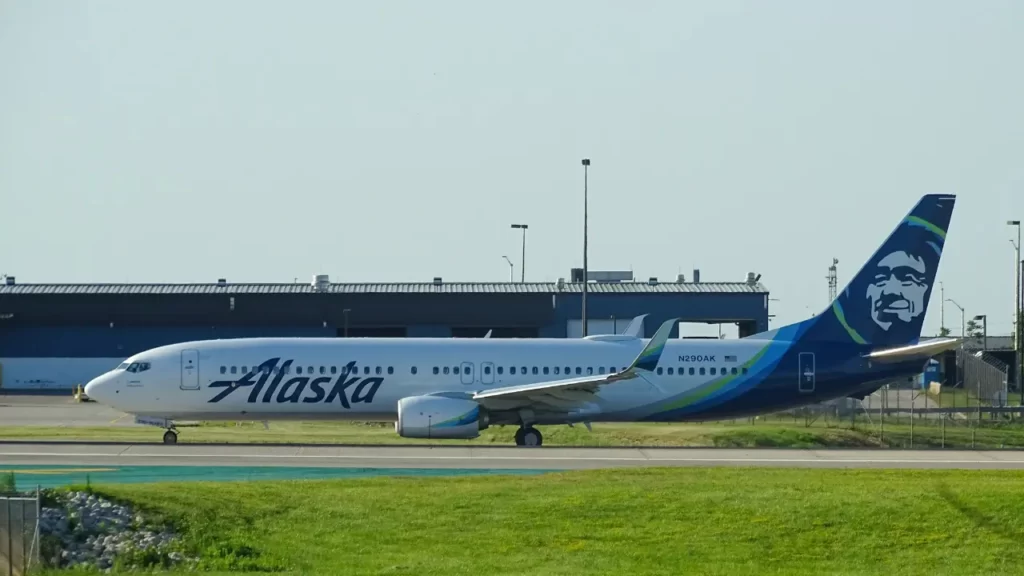
Alaska Airlines Overview
Alaska Airlines is a major American airline with a focus on serving destinations along the West Coast of the United States. Here is an overview of Alaska Airlines.
Table of Contents
Founding and History
- Alaska Airlines was founded in 1932 as McGee Airways and later underwent several name changes before adopting the name Alaska Airlines in 1944.
Hub and Focus Cities
- Alaska Airlines has its primary hub at Seattle-Tacoma International Airport (SEA) and a significant presence at other airports, including Portland International Airport (PDX), Los Angeles International Airport (LAX), and San Francisco International Airport (SFO).
Fleet
- Alaska Airlines operates a fleet that includes Boeing 737 and Airbus A320 family aircraft. Historically, the airline has been known for its commitment to the Boeing 737, but it expanded its fleet with the acquisition of Airbus aircraft through its merger with Virgin America.
Route Network
- The airline has a comprehensive route network that covers destinations within the United States, Mexico, Canada, and some parts of Costa Rica. Alaska Airlines is particularly known for connecting cities on the West Coast.
Merger with Virgin America
- In 2016, Alaska Airlines completed its acquisition of Virgin America, expanding its route network and strengthening its presence in California and other West Coast markets.
Loyalty Program
- Alaska Airlines operates the Mileage Plan loyalty program, allowing passengers to earn and redeem miles for flights, upgrades, and various other benefits. The loyalty program is highly regarded in the industry.
Customer Service and Amenities
- Alaska Airlines is known for its commitment to customer service. The airline has received accolades for its on-time performance, baggage handling, and overall customer satisfaction.
- Passengers can enjoy amenities such as in-flight entertainment, Wi-Fi, and complimentary snacks and beverages.
Sustainability Initiatives
- Alaska Airlines has implemented various initiatives to improve sustainability, including investments in fuel-efficient aircraft, efforts to reduce emissions, and a commitment to environmental responsibility.
Impact of COVID-19
- Like the entire airline industry, Alaska Airlines faced challenges due to the COVID-19 pandemic. The airline implemented safety measures, adjusted schedules, and worked to adapt to changing travel conditions.
Expansion and Partnerships
- Alaska Airlines has continued to expand its network and enter into partnerships to provide passengers with more travel options. The airline has codeshare agreements with several international carriers.
Alaska Airlines History

- Alaska Airlines has a rich history that dates back to the early days of aviation in the state of Alaska. Here’s an overview of key milestones in the history of Alaska Airlines:
Early Beginnings (1932-1940s)
- Alaska Airlines traces its roots to McGee Airways, which was founded in 1932 by Linious “Mac” McGee. The airline primarily operated in the state of Alaska, providing mail services.
- In 1934, McGee Airways merged with Star Air Service to form Star-McGee Airways. The airline continued to expand its operations in Alaska.
Formation of Alaska Airlines (1944)
- In 1944, the airline officially adopted the name “Alaska Airlines.” This marked the beginning of the airline as it is known today.
Post-War Expansion (1950s-1960s)
- Alaska Airlines expanded its route network in the post-war period, serving various communities in Alaska. The airline played a vital role in connecting remote areas.
- The acquisition of Consolidated Vultee BT-13 Valiant aircraft in the 1950s allowed Alaska Airlines to enhance its services.
Jet Age and Expansion (1960s-1970s)
- Alaska Airlines entered the jet age with the introduction of Boeing 727 jetliners in the 1960s. This transition marked a significant advancement in the airline’s capabilities.
- The 1970s saw further expansion, including the addition of routes to the continental United States.
Acquisition of Horizon Air (1986)
- In 1986, Alaska Airlines acquired Horizon Air, a regional airline based in Seattle. This acquisition allowed Alaska Airlines to strengthen its presence in the Pacific Northwest.
Expansion to Mexico (1980s-1990s)
- Alaska Airlines expanded its international reach by introducing flights to destinations in Mexico during the late 1980s and 1990s.
Transition to All-Jet Fleet (2000s)
- Alaska Airlines transitioned to an all-jet fleet, retiring its remaining turboprop aircraft. The Boeing 737 became a central part of the airline’s fleet.
Acquisition of Virgin America (2016)
In 2016, Alaska Airlines completed the acquisition of Virgin America. This strategic move expanded the airline’s route network, especially in California, and strengthened its position in competitive markets.
- Sustainability Initiatives:
Alaska Airlines has demonstrated a commitment to sustainability and environmental responsibility. The airline has implemented measures to reduce its carbon footprint and invest in more fuel-efficient aircraft.
- Ongoing Innovations and Adaptations:
Alaska Airlines has continued to innovate, introducing new services, amenities, and technology to enhance the passenger experience. The airline has also adapted to industry changes and challenges, including those posed by the COVID-19 pandemic.
Alaska Airlines has maintained a focus on serving the unique needs of Alaska while expanding its network to become a major player in the U.S. aviation industry. Please note that developments may have occurred since my last update in January 2022. For the latest and most accurate information about Alaska Airlines, including its current status and recent changes, it is recommended to check the official Alaska Airlines website and recent news sources.

wonderful issues altogether, you simply gained a logo new reader. What could you recommend in regards to your submit that you made some days ago? Any certain?
I read this article fully on the topic of the comparison of latest and preceding technologies, it’s remarkable article.
You really make it seem so easy with your presentation but I find this matter to be really something that I think I would never understand. It seems too complicated and very broad for me. I’m looking forward for your next post, I will try to get the hang of it!